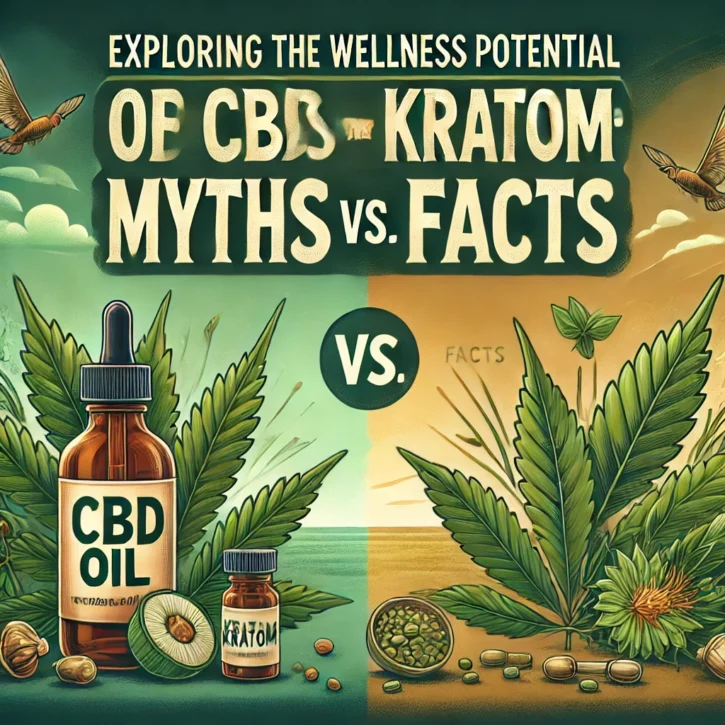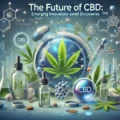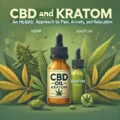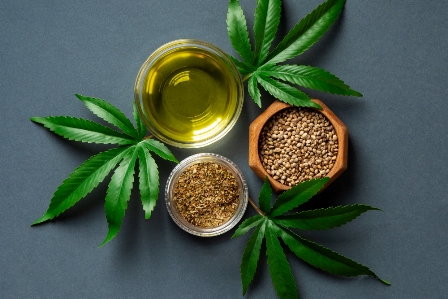CBD and Kratom are two natural substances that have gained widespread attention for their potential health benefits. However, misconceptions and myths often surround their use, legality, and effects. This article delves into the truth behind CBD and Kratom, exploring their origins, benefits, and scientific backing.
Understanding CBD and Kratom
What is CBD?
CBD (Cannabidiol) is a naturally occurring compound found in the Cannabis sativa plant. Unlike THC, CBD does not produce psychoactive effects and is primarily used for therapeutic purposes.
What is Kratom?
Kratom (Mitragyna speciosa) is a tropical tree native to Southeast Asia. Its leaves contain alkaloids like mitragynine and 7-hydroxymitragynine, which interact with opioid receptors, leading to stimulant or sedative effects, depending on the dosage.
Myths and Facts About CBD
Myth 1: CBD Gets You High
Fact: Unlike THC, CBD does not have intoxicating effects. It interacts with the endocannabinoid system to promote balance and well-being without altering perception.
Myth 2: CBD is Illegal Everywhere
Fact: CBD derived from hemp (containing less than 0.3% THC) is legal at the federal level in the U.S., but state laws vary. Always check local regulations before purchasing.
Myth 3: CBD Has No Scientific Backing
Fact: Numerous studies support CBD’s potential benefits for pain relief, anxiety reduction, epilepsy treatment, and more. The FDA has approved Epidiolex, a CBD-based medication for epilepsy.
Myths and Facts About Kratom
Myth 1: Kratom is an Opiate
Fact: Kratom is not an opiate, but it interacts with opioid receptors in the brain. This interaction is what gives it pain-relieving and mood-enhancing properties.
Myth 2: Kratom is Dangerous and Addictive
Fact: While excessive use of Kratom may lead to dependency, moderate and responsible consumption is considered safe. Research is ongoing to better understand its long-term effects.
Myth 3: Kratom Has No Medical Uses
Fact: Kratom has been traditionally used in Southeast Asia for pain relief, energy enhancement, and opioid withdrawal management. Some studies suggest it may offer a safer alternative to opioids.
Benefits of CBD and Kratom
Potential Benefits of CBD
- Pain Management: Reduces inflammation and chronic pain conditions.
- Anxiety and Stress Reduction: Supports mental health and relaxation.
- Neuroprotection: May help with Alzheimer’s, Parkinson’s, and epilepsy.
- Skin Health: Found in skincare products to combat acne and irritation.
- Heart Health: Linked to lower blood pressure and improved circulation.
Potential Benefits of Kratom
- Pain Relief: Acts as a natural analgesic for chronic pain.
- Energy Boost: Lower doses provide stimulant-like effects, improving focus and stamina.
- Mood Enhancement: Helps with anxiety, depression, and motivation.
- Opioid Withdrawal Aid: Used by some as an alternative to opioids for addiction recovery.
Differences Between CBD and Kratom

Safety and Precautions
Safe Usage of CBD
- Always choose third-party tested products.
- Consult a doctor before using CBD, especially if on medication.
- Start with a low dose and adjust as needed.
Safe Usage of Kratom
- Avoid high doses to reduce the risk of dependency.
- Purchase from reputable sources to avoid contamination.
- Use in moderation and be aware of potential side effects like nausea and dizziness.
Conclusion
CBD and Kratom both have potential wellness benefits but are often misunderstood due to misinformation. While CBD is widely accepted and researched, Kratom remains controversial due to its opioid-like effects. Responsible use, legal awareness, and proper education can help individuals make informed decisions about these natural substances. Always consult a healthcare professional before incorporating CBD or Kratom into your wellness routine.




